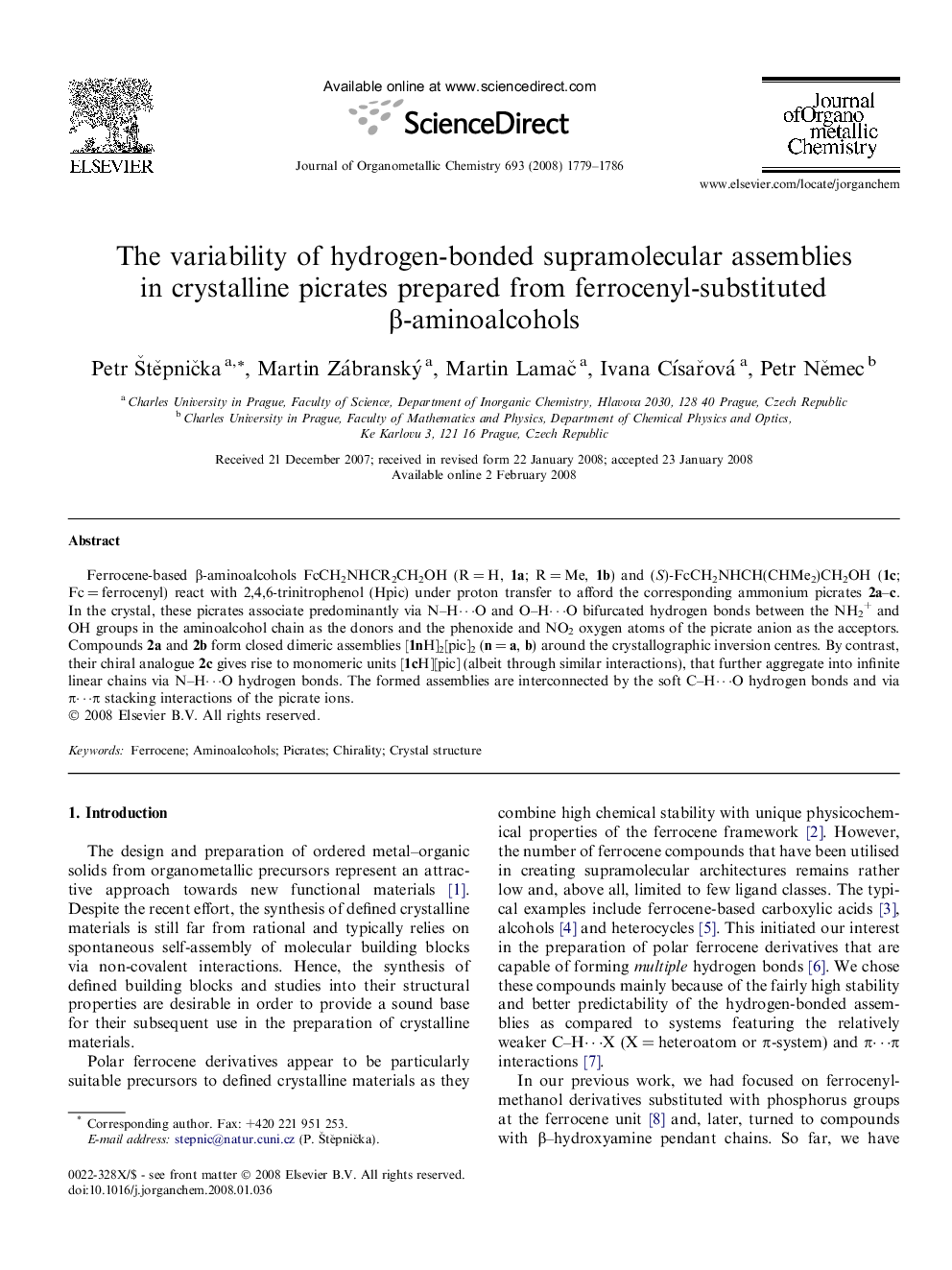| کد مقاله | کد نشریه | سال انتشار | مقاله انگلیسی | نسخه تمام متن |
|---|---|---|---|---|
| 1324945 | 977361 | 2008 | 8 صفحه PDF | دانلود رایگان |

Ferrocene-based β-aminoalcohols FcCH2NHCR2CH2OH (R = H, 1a; R = Me, 1b) and (S)-FcCH2NHCH(CHMe2)CH2OH (1c; Fc = ferrocenyl) react with 2,4,6-trinitrophenol (Hpic) under proton transfer to afford the corresponding ammonium picrates 2a–c. In the crystal, these picrates associate predominantly via N–H⋯O and O–H⋯O bifurcated hydrogen bonds between the NH2+ and OH groups in the aminoalcohol chain as the donors and the phenoxide and NO2 oxygen atoms of the picrate anion as the acceptors. Compounds 2a and 2b form closed dimeric assemblies [1nH]2[pic]2 (n = a, b) around the crystallographic inversion centres. By contrast, their chiral analogue 2c gives rise to monomeric units [1cH][pic] (albeit through similar interactions), that further aggregate into infinite linear chains via N–H⋯O hydrogen bonds. The formed assemblies are interconnected by the soft C–H⋯O hydrogen bonds and via π⋯π stacking interactions of the picrate ions.
The readily available ferrocenylated β-aminoalcohols FcCH2NHCR2CH2OH form well-defined crystalline picrates that form supramolecular assemblies via N–H⋯O and O–H⋯O bifurcated hydrogen bonds. Whereas the achiral compounds (R2 = H2 and Me2) give rise to closed dimeric assemblies around the crystallographic inversion centres, their chiral counterpart (R2 = H/i-Pr) forms infinite linear chains (see the picture; the ferrocenyl groups are omitted).Figure optionsDownload as PowerPoint slide
Journal: Journal of Organometallic Chemistry - Volume 693, Issue 10, 1 May 2008, Pages 1779–1786